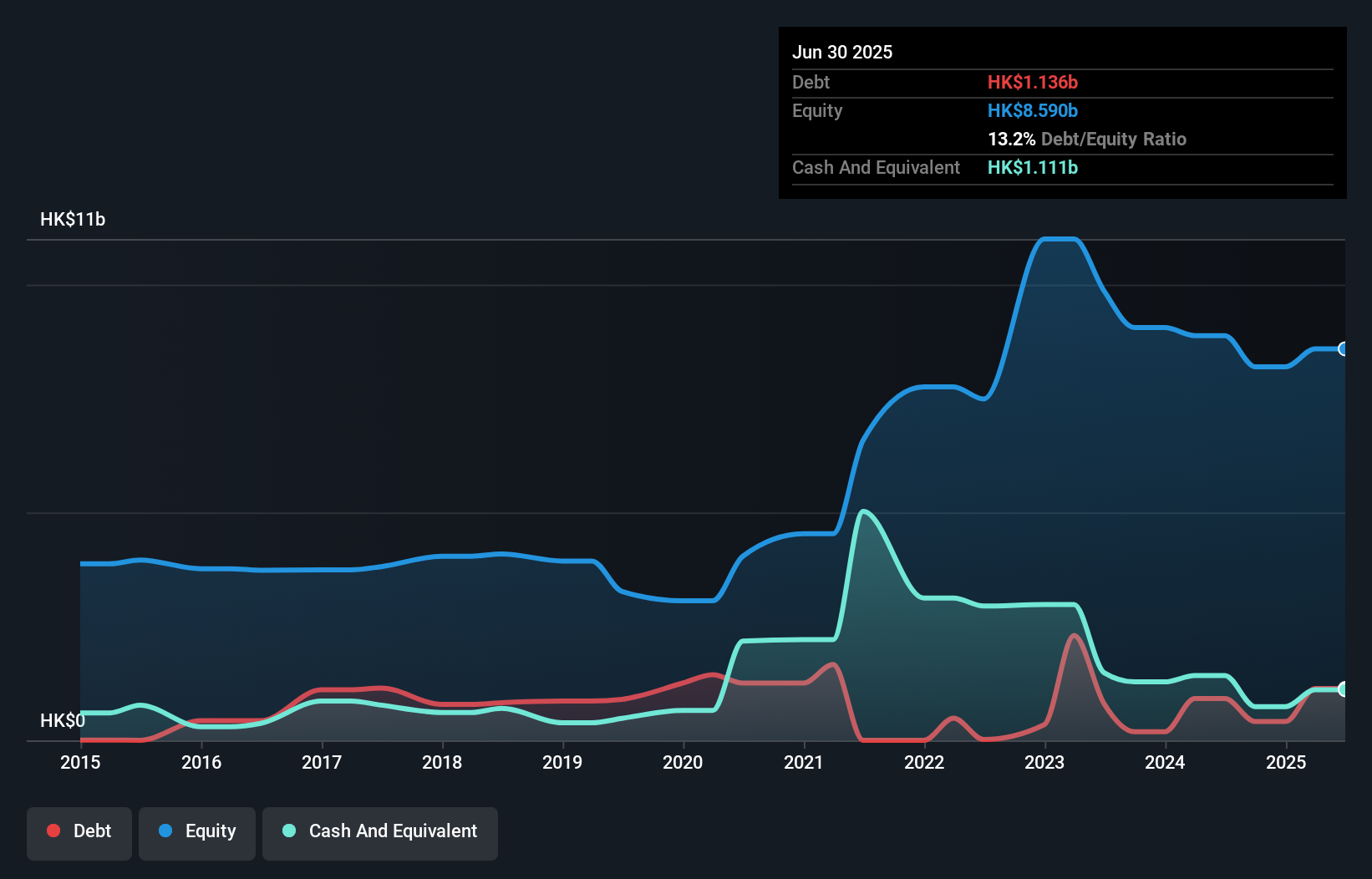David Iben put it well when he said, 'Volatility is not a risk we care about. What we care about is avoiding the permanent loss of capital.' When we think about how risky a company is, we always like to look at its use of debt, since debt overload can lead to ruin. We note that Viva Goods Company Limited (HKG:933) does have debt on its balance sheet. But the real question is whether this debt is making the company risky.
When Is Debt Dangerous?
Debt assists a business until the business has trouble paying it off, either with new capital or with free cash flow. In the worst case scenario, a company can go bankrupt if it cannot pay its creditors. While that is not too common, we often do see indebted companies permanently diluting shareholders because lenders force them to raise capital at a distressed price. Of course, plenty of companies use debt to fund growth, without any negative consequences. When we examine debt levels, we first consider both cash and debt levels, together.
How Much Debt Does Viva Goods Carry?
The image below, which you can click on for greater detail, shows that at June 2025 Viva Goods had debt of HK$1.14b, up from HK$917.1m in one year. However, it does have HK$1.11b in cash offsetting this, leading to net debt of about HK$25.3m.

How Strong Is Viva Goods' Balance Sheet?
According to the last reported balance sheet, Viva Goods had liabilities of HK$4.18b due within 12 months, and liabilities of HK$2.48b due beyond 12 months. Offsetting this, it had HK$1.11b in cash and HK$843.8m in receivables that were due within 12 months. So its liabilities outweigh the sum of its cash and (near-term) receivables by HK$4.71b.
This is a mountain of leverage relative to its market capitalization of HK$6.07b. This suggests shareholders would be heavily diluted if the company needed to shore up its balance sheet in a hurry. Carrying virtually no net debt, Viva Goods has a very light debt load indeed. The balance sheet is clearly the area to focus on when you are analysing debt. But you can't view debt in total isolation; since Viva Goods will need earnings to service that debt. So when considering debt, it's definitely worth looking at the earnings trend. Click here for an interactive snapshot.
See our latest analysis for Viva Goods
In the last year Viva Goods had a loss before interest and tax, and actually shrunk its revenue by 6.8%, to HK$10b. That's not what we would hope to see.
Caveat Emptor
Over the last twelve months Viva Goods produced an earnings before interest and tax (EBIT) loss. To be specific the EBIT loss came in at HK$169m. When we look at that and recall the liabilities on its balance sheet, relative to cash, it seems unwise to us for the company to have any debt. So we think its balance sheet is a little strained, though not beyond repair. We would feel better if it turned its trailing twelve month loss of HK$1.7m into a profit. In the meantime, we consider the stock very risky. There's no doubt that we learn most about debt from the balance sheet. However, not all investment risk resides within the balance sheet - far from it. Case in point: We've spotted 1 warning sign for Viva Goods you should be aware of.
When all is said and done, sometimes its easier to focus on companies that don't even need debt. Readers can access a list of growth stocks with zero net debt 100% free, right now.
New: Manage All Your Stock Portfolios in One Place
We've created the ultimate portfolio companion for stock investors, and it's free.
• Connect an unlimited number of Portfolios and see your total in one currency
• Be alerted to new Warning Signs or Risks via email or mobile
• Track the Fair Value of your stocks
Have feedback on this article? Concerned about the content? Get in touch with us directly. Alternatively, email editorial-team (at) simplywallst.com.
This article by Simply Wall St is general in nature. We provide commentary based on historical data and analyst forecasts only using an unbiased methodology and our articles are not intended to be financial advice. It does not constitute a recommendation to buy or sell any stock, and does not take account of your objectives, or your financial situation. We aim to bring you long-term focused analysis driven by fundamental data. Note that our analysis may not factor in the latest price-sensitive company announcements or qualitative material. Simply Wall St has no position in any stocks mentioned.
About SEHK:933
Viva Goods
An investment holding company, provides apparel and footwear in the United Kingdom, the Republic of Ireland, the United States, the People’s Republic of China, Asia, Europe, the Middle East, and Africa.
Excellent balance sheet and slightly overvalued.
Similar Companies
Market Insights
Community Narratives




